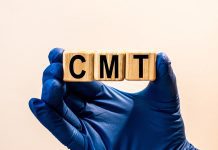
A team of experts from around the world has teamed up to improve clinical outcomes for children with cancer following radiation therapy.
Radiation therapy has improved outcomes for children with cancer, however, it can cause damage to healthy tissue which can lead impact on children’s health long term. Despite being in use for many years, to date, there is no guiding source of data to enable clinicians to make evidence-based treatment decisions specifically for children. To combat this problem, a team of more than 150 specialists from across the globe have joined together to create evidence-based guidelines for radiation therapy dosing for children.
An introduction to Pediatric Normal Tissue Effects in the Clinic (PENTEC), which aims to minimise radiation therapy side effects, was recently published in the International Journal of Radiation Oncology.
Radiation dosing
PENTEC is made up of more than 150 physicians, medical physicists, epidemiologists, and other specialists, who volunteer their time and expertise. It has been organised into 18 research groups, each of which focuses on how radiation affects a particular organ system such as the lungs and respiratory pathway or the central nervous system. The group reviews medical literature for studies and articles that report doses and outcomes, and then correlate the side effects with the radiation dose to each organ.
Arthur Olch, PhD, a Medical Physicist at Children’s Hospital Los Angeles and who is on the steering committee of PENTEC, said: “This is really a labour of love. We are all professionals and specialists, but we’re also just people who care about what happens to these kids after their cancers are treated. We are collecting a huge amount of information, which allows us to make recommendations about safe dosing to the paediatric radiation oncology community that’s backed by evidence.”
Reporting standards
Currently, many case studies do not include enough information to contribute to the dose response curves – for example, a study that reports on side effects but does not report on the radiation dose causing those effects cannot be included. PENTEC aims to change this by proposing reporting standards for future studies so that guidelines can be shaped by as much information as possible.
The specialists who volunteer with PENTEC have been working for several years on compiling enough information to formulate these guidelines.
“What we are doing has very broad implications,” says Dr Olch. “This will change the course of paediatric radiation therapy and hopefully lead to better outcomes for children with cancer – not just at Children’s Hospital Los Angeles and in the United States, but worldwide.”







